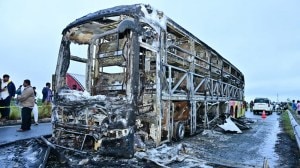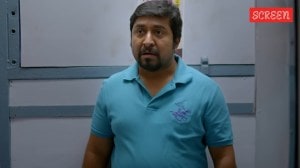Don’t `relocate’ pollution
In the light of the recent controversy over relocating Delhi’s industrial units and the editorial, ‘...

In the light of the recent controversy over relocating Delhi’s industrial units and the editorial, ‘Capital frenzy’ (November 22), it is worth recalling a little bit of history.
When Partition took place, thousands of rootless people came down to Delhi with nothing except what, in today’s parlance, is called ‘human resource’. Helped by the then rehabilitation minister, Mehar Chand Khanna, they created small-scale units all over Delhi with their hard labour, honesty and tenacity. This helped the city’s progress in many ways. There is no reason for the authorities to deal a death blow to these people who have already suffered so much, ever since they were forced to leave Pakistan in 1947. In any case, there has been no integrated policy to guide urban development and land in the Capital is being hacked into smaller and smaller plots and peddled off in what has come to be termed as ‘‘burfi planning’’.
The Master Plan of Delhi (MPD) has been amended 220 times, indicating the hard fact that the city is a major casualty of the so-called ‘‘50 years of planned development’’. Public good was not the main propelling factor behind the several amendments that have been made to the Master Plan in the past. Governments, it seems, used the amendments as a soft-option to cover up what was, otherwise, their failure to control the situation.
The controversy first began when, in response to a PIL filed by lawyer M.C. Mehta, the Supreme Court (SC) in its order dated December 30, 1995, directed Municipal Corporation of Delhi not to grant/renew licences for industrial units in non-conforming, or residential areas. The court on April 19, 1996, ordered that those industries that had not obtained the necessary permission from the Delhi government, should stop operating in residential areas from January 1, 1997. The SC in its order dated September 8, 1999, gave a deadline of December 31 the same year for the entire process of the relocation of industries to be completed.
Faced with continued flak from the Supreme Court and scarcity of land, a panic-stricken Delhi government has got in touch with the Haryana and Rajasthan governments to explore the possibility of relocating thousands of industrial units from the city to townships in the National Capital Region (NCR). Similarly, to project before the court that it has been taking steps to check Yamuna’s pollution, the Delhi government is veering round to the idea that all water-polluting units in Delhi have to close down and shift to neighbouring states. Industrial associations have categorically said that they will not shift out of Delhi, given the prevailing situation in the NCR townships.
Although presently there are 24,000 industries in non-confirming areas, the government has decided to accord priority and allot plots to the 711 water-polluting units, which are operating in residential areas. Once the plots are allotted, industrialists would be expected to show 50 to 75 per cent progress by March 31, 2001. If this were done, an extension would be given uptil June 30, 2001. About 6,000 industries, which are not primarily water polluting, would be shifted to sector one of the Bawana industrial estate, on the outskirts of the city. Additional plots would also be made available in the Badli, Jhilmil and Patparganj industrial estates.
This is all very well, but the Delhi government has to make a choice: Does it care more for industrial workers or for farmers who will lose their land in the process. Indeed, do the people of Bawana, for instance, want the polluting industrial units in their backyard? Now, the answer to the existing problem is not to relocate these industries and allow them to continue polluting the environment, but rather to provide incentives for technological improvements, so that these units do not pose any environmental hazards. By relocating them to other areas we are simply pushing out the problem from our midst. Clean areas must remain clean. We must not ‘shift’ our environmental problems elsewhere. This ‘passing on’ of environmental problems shows our short-sightedness. Clean areas are crucial: They need a vision for a clean and sound economy for the future.





- 01
- 02
- 03
- 04
- 05


























